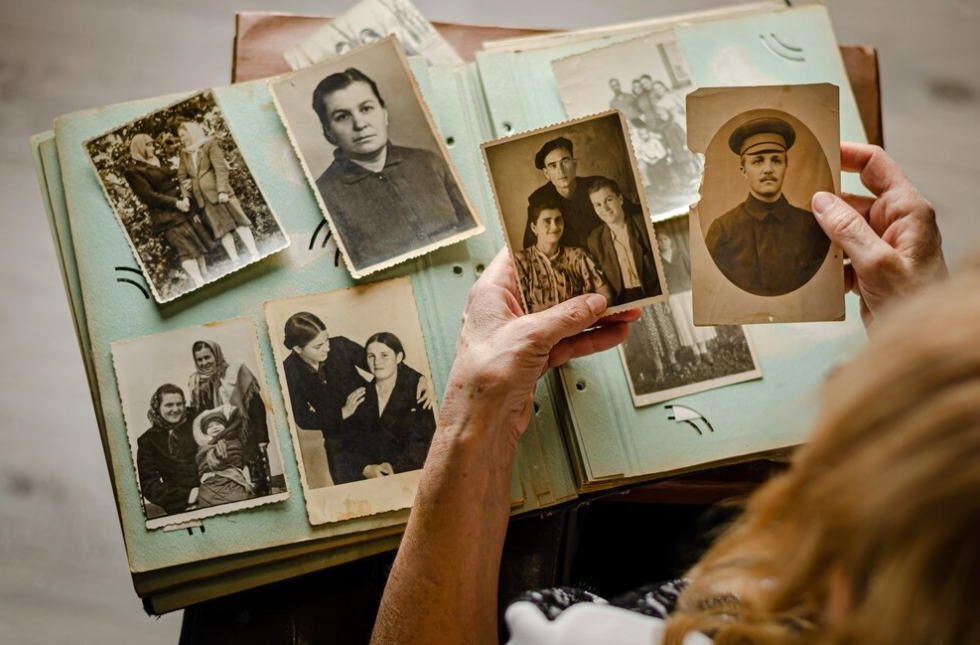Starting any new project can be overwhelming, especially when you encounter unfamiliar terms or struggle to use them correctly. Language nuances across regions add to the challenge, with some words having multiple meanings and others being very specific.
But fear not, making mistakes is normal, and nobody will penalize you for mixing things up. Even after years of experience, I still find myself interchanging the terms genealogy, ancestry, and family history, using them interchangeably.
Genealogy and Ancestry: Understanding the Difference
When engaging in discussions about genealogy or contemplating your family history, clarity is crucial. The right choice of words can significantly impact the responses you receive. While the disparity between genealogy and ancestry might seem minor to you, for others, it can make a world of difference. Minimizing misunderstandings is essential.
I vividly recall a childhood memory of visiting a cemetery and coming across the word “consort” on one of the headstones. Utterly perplexed, I erroneously associated it with something negative. In my young mind, I believed they were revealing that the woman buried there was a mistress. Thankfully, my mother swiftly corrected my misconception, explaining that it actually meant “spouse.” Oh, the scandalous thoughts that briefly occupied my mind!
Genealogy and Ancestry: Understanding the Distinction
Genealogy vs. Ancestry – these terms are often used interchangeably, leading to some confusion. And it’s true; when you mention “working on my Genealogy” or “working on my Ancestry,” people generally understand your intent. However, in actuality, they do have distinct definitions.
Genealogy is the systematic study and research of family tree lines, delving into the connections and relationships between ancestors and descendants. On the other hand, ancestry refers to the actual individuals in your family tree, tracing your family’s lineage through generations. In essence, genealogy is the investigative work, while ancestry comprises the people being researched, the intricate branches of your family tree.
Ancestry and Family History: A Vibrant Tapestry of the Past
Having distinguished between genealogy and ancestry, let’s now delve into family history’s significance.
Family history is more than just tracing your lineage; it encapsulates the captivating narratives of your ancestors. It unveils the enthralling tales of your family’s past, shedding light on their daily lives in bygone eras, their medical histories, the valorous war stories, and the adventures of immigration journeys.
Family history breathes life into genealogy and ancestry, enriching the tapestry of your heritage with vivid stories and personal connections to the past. It offers a profound understanding of who you are and where you come from, turning your ancestral exploration into a vibrant and meaningful journey.
Genealogy Vocabulary: A Beginner’s Guide
Embarking on your family research journey requires familiarity with fundamental terms. Here are some of the most common genealogy terms you will encounter while delving into your ancestral past. Acquainting yourself with this basic vocabulary will prove invaluable in your genealogical pursuits.
Genealogy Terms: Definitions and Meanings

| Term | Definition |
|---|---|
| Ancestor | An individual in your family tree from whom you are directly descended—such as your parents, grandparents, and great-grandparents, excluding aunts, uncles, and cousins. |
| Ancestry | The entirety of your ancestors, tracing back as far as their origins can be identified. |
| Common Ancestor | An ancestor shared between you and another person, like grandparents for you and your first cousin. |
| Consort | A spouse or companion, for instance, your mother in relation to your father. |
| Descendants | Individuals who descend in a direct line from another person, as you are a descendant of your parents, and they are descendants of your grandparents. |
| Direct Line | A lineage in your family tree traced through child-to-parent-to-grandparent, leading to a single ancestor. |
| Family Tree | An illustrative chart depicting family members and their generational relationships. |
| Forefather | An ancestor who precedes you in your family tree. |
| Generation | Individuals born on the same level of descent from a common ancestor form a generation—like your grandparents, parents, and siblings constituting separate generations. |
| Maternal | Pertaining to your mother’s side of the family, e.g., your maternal grandparents are your mother’s parents. |
| Paternal | Relating to your father’s side of the family, for example, your paternal grandparents are your father’s parents. |
| Pedigree | A direct line of descent from an ancestor, showing your lineage in the family tree, such as the connection from you to your parents, and from them to their ancestors. |
| Removed | When someone is described as “once removed” or “twice removed,” it signifies that they are in a different generational level in relation to the common ancestor. “Once removed” means one generation difference, “twice removed” indicates two generations, and so on. |
Genealogy Abbreviations
In the course of examining records during my genealogy research, I’ve encountered numerous instances of abbreviations replacing fully spelled words. While most of us recognize “abt” stands for “about,” did you know that an “a” followed by a period can also signify “about”? Here, I’ve compiled some of the abbreviations I’ve encountered in my research. Understanding these shortened terms will prove valuable in deciphering historical documents and enhancing your genealogical investigations.
- a. – About;
- ab. – About;
- abt. – About;
- ackd. – Acknowledged;
- aft. – After;
- appr. – Approximate or Approximatly;
- b. – Born;
- bef. – Before;
- bet. – Between;
- bur. – Buried;
- c. or ca. – Circa;
- cem. – Cemetery;
- chr.– Christened;
- dec’d – Deceased;
- liv. – Living;
- m. – Married;
- nee – Maiden Name;
- obit. – Obituary;
- rec’d – Received;
- unk. – Unknown.
Abbreviations for Common Male Names
Throughout history, it was a customary practice to abbreviate names on records. Names like James or John would be shortened to Jas or Jno. In modern-day records, the full name is more commonly written instead of using abbreviations. Here are some of the abbreviations used for common male names.
- And. – Andrew;
- Ant. – Anthony;
- Art. – Arthur;
- Aug. – August or Augustus;
- Benj. – Benjamin;
- Chas. – Charles;
- Danl. – Daniel;
- Dav. – David;
- Edw. – Edward;
- Geo.– George;
- Jas. – James;
- Jno. – John;
- Jso. – Joseph;
- Mich. – Michael;
- Nic. or Nich – Nicholas;
- Ric. – Richard;
- Thos. – Thomas;
- Wm. – William.
Abbreviations for Common Female Names
- An. – Anne;
- Barb. – Barbara;
- Brid. – Bridget;
- Cath.– Catherine;
- Deb. – Deborah or Debra;
- Dy. – Dorothy;
- Eliz.– Elizabeth;
- Elnr. – Eleanor;
- Han. – Hannah;
- Hel.– Hellen;
- Margt. – Margaret;
- My. – Mary;
- Phyl. – Phyllis;
- Sar. – Sarah;
- Sus. – Susan.
Conclusion
As you continue on your genealogy quest, these terms and their meanings will prove valuable. You may encounter unfamiliar words or phrases along the way, but remember, embracing new knowledge is part of the adventure and adds to the enjoyment.
